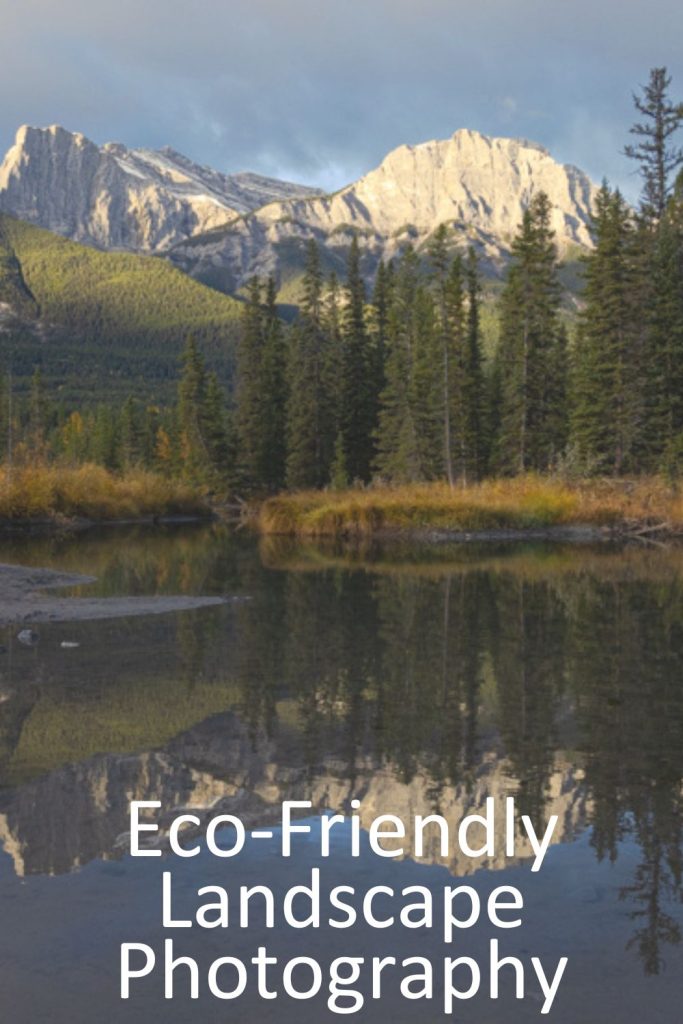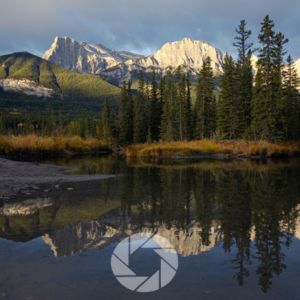
Eco-friendly landscape photography isn’t just a buzzword; it’s a commitment to preserving the very environments that inspire our art.
In this post, we’ll delve into what it means to practice sustainable photography, explore the principles of minimal impact, and spotlight organizations leading the charge in conservation.
Let’s embark on this journey to harmonize our creative pursuits with environmental stewardship.
Eco-Friendly Landscape Photography: The Intersection of Art and Stewardship
Understanding Eco-Friendly Landscape Photography
Eco-friendly landscape photography is more than just choosing the right gear; it’s about adopting a mindset that prioritizes the well-being of our planet. This approach encompasses:
- Sustainable Travel: Opting for eco-friendly transportation methods and reducing unnecessary travel. Commute with others to your photo destination to reduce carbon impacts (and your gas bill).
- Minimal Impact Practices: Being mindful of our presence in natural settings to avoid disturbing ecosystems.
- Ethical Sharing: Promoting responsible behavior through the images and stories we share. I recommend not sharing/geo tagging sensitive or unknown areas
By integrating these principles, photographers can play a pivotal role in conservation efforts.
What is Leave No Trace (LNT)
The Leave No Trace (LNT) principles are a set of outdoor ethics designed to guide people in minimizing their impact on the environment. Originally developed by the Leave No Trace Center for Outdoor Ethics, these seven core principles provide a framework for enjoying the outdoors responsibly, whether you’re hiking, camping, photographing, or simply spending time in nature.
These principles are especially important for landscape photographers, since our work often takes us into sensitive or pristine ecosystems. Following them ensures that we protect the places we love and allow future generations to experience the same natural beauty.
Embracing Leave No Trace Principles
Central to eco-friendly landscape photography is the adherence to the Leave No Trace (LNT) principles, a set of guidelines designed to promote responsible outdoor ethics.
The 7 Leave No Trace Principles:
Plan Ahead and Prepare
Research your destination. Know the regulations, weather conditions, terrain, and any sensitive ecological areas. Good planning helps reduce waste, avoid unexpected situations, and minimize environmental damage.
Travel and Camp on Durable Surfaces
Stick to established trails and campsites. Walking or setting up gear on fragile vegetation can lead to erosion, habitat loss, and long-term damage to delicate ecosystems.
Dispose of Waste Properly
Pack it in, pack it out. This includes all trash, food scraps, and even biodegradable items like fruit peels. If nature didn’t produce it there, take it with you.
Leave What You Find
Avoid picking wildflowers, collecting rocks, or disturbing cultural artifacts. Take only photographs and memories, leave nature just as you found it.
Minimize Campfire Impacts
Use a lightweight stove instead of a campfire whenever possible. If fires are allowed, use established fire rings and keep fires small. Never burn trash or break live branches for firewood.
Respect Wildlife
Observe animals from a distance and never feed them. Feeding wildlife alters natural behaviors and can endanger both animals and people.
Be Considerate of Other Visitors
Keep noise levels down, avoid blocking trails, and give others space to enjoy nature. Especially when flying drones or setting up tripods, be aware of your impact on other visitors’ experience.
Implementing these principles ensures that our photographic activities do not harm the environments we aim to celebrate.
Inspiring Stories of Photographers Making a Difference
Many photographers have seamlessly blended their artistic talents with conservation efforts:
- Sebastião Salgado: Renowned for his “Genesis” project, Salgado spent eight years capturing pristine landscapes and wildlife, aiming to showcase the planet’s untouched beauty and advocate for its preservation.
- Cristina Mittermeier: A marine biologist turned photographer, Mittermeier co-founded SeaLegacy, using compelling imagery to drive ocean conservation initiatives.
- Joel Sartore: Through the Photo Ark project, Sartore aims to document every species in captivity, raising awareness about biodiversity and the importance of conservation.
These individuals exemplify how photography can be a powerful tool for environmental advocacy.
Practical Tips for Sustainable Landscape Photography
To align your photography practices with eco-friendly principles:
Use Eco-Friendly Gear
Invest in durable equipment to reduce waste and consider brands that prioritize sustainability. Avoid being penny wise but pound foolish: invest in better built gear for more cost rather than cheaper kit that needs to be replaced often. You will save money and headache in the long run.
Limit Off-Trail Exploration
Venturing off established paths can damage fragile ecosystems; always tread lightly and keep on established paths.
Educate Your Audience
Use your platform to inform others about conservation issues and responsible practices. Please visit some of the links in this post and learn more about eco-friendly landscape photography and what you can do to support conservation and education efforts.
Participate in Clean-Up Efforts
Dedicate time to removing litter from natural areas, setting an example for others.
By adopting these habits, photographers can ensure their work contributes positively to environmental preservation.
Highlighting Organizations Championing Nature and Photography
Several organizations stand at the forefront of merging photography with conservation:
- Nature’s Best Photography: Dedicated to celebrating the beauty and diversity of nature through photography, this organization hosts annual competitions that highlight the work of photographers committed to conservation.
- The Nature Conservancy: While primarily focused on environmental conservation, they often collaborate with photographers to document and promote their initiatives.
- National Wildlife Federation: This organization uses photography to inspire Americans to protect wildlife and wild places.
- Leave No Trace Center for Outdoor Ethics: Beyond promoting the LNT principles, they provide resources for photographers to minimize their environmental impact.
- SeaLegacy: Co-founded by Cristina Mittermeier, SeaLegacy uses visual storytelling to drive ocean conservation efforts.
Engaging with these organizations can provide photographers with resources, platforms, and communities dedicated to eco-friendly practices.
Conclusion
Eco-friendly landscape photography is not just about capturing stunning images; it’s about fostering a deeper connection with the environment and advocating for its protection.
By integrating sustainable practices into our photographic pursuits, we not only preserve the integrity of natural landscapes but also inspire others to value and protect our planet.
Let your lens illuminate the path toward a more sustainable and harmonious relationship with nature.
📸Learn for free!
➡️ FREE Wallpapers and Guides
➡️ DISCOUNTS on future Tours & Tutorials
➡️ TIPS for improving Your photography

I don’t share your Info with anyone. You can unsubscribe at anytime.
- Eco-Friendly Landscape Photography: The Intersection of Art and Stewardship
- Understanding Eco-Friendly Landscape Photography
- What is Leave No Trace (LNT)
- Embracing Leave No Trace Principles
- Inspiring Stories of Photographers Making a Difference
- Practical Tips for Sustainable Landscape Photography
- Highlighting Organizations Championing Nature and Photography
- Conclusion
- 📸Learn for free!





